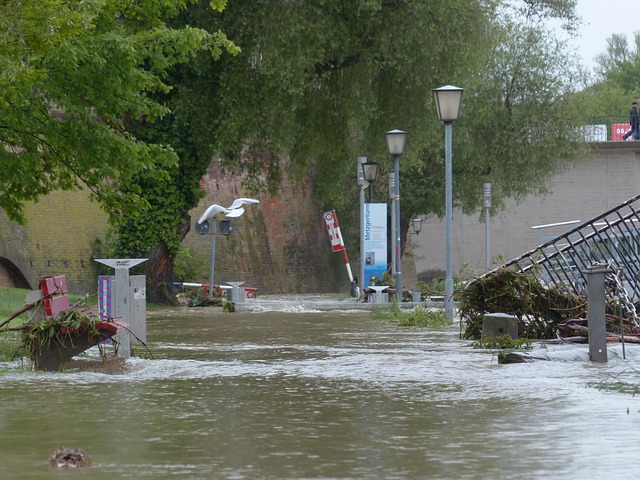Water damage, whether from floods, leaks, or other sources, poses a threat to structures and belongings and has a profound impact on the environment. Understanding the environmental consequences of water damage and the importance of eco-friendly restoration practices is crucial in mitigating the broader ecological footprint associated with such incidents.
1. Soil Contamination and Erosion
Water damage can lead to soil contamination as pollutants carried by floodwaters infiltrate the ground. Harmful chemicals, sewage, and debris can contaminate the soil, affecting its fertility and composition. Additionally, erosion may occur, further disrupting ecosystems. Eco-friendly restoration methods focus on minimizing soil disturbance and preventing further contamination.
2. Water Quality Degradation
Contaminated water resulting from floods or leaks can compromise the quality of water sources. This threatens aquatic ecosystems, wildlife, and even human populations that rely on these water bodies. Environmentally conscious restoration involves cleaning the affected area and ensuring that contaminants are adequately removed to prevent ongoing water pollution.
3. Impact on Flora and Fauna
Ecosystems adjacent to water-damaged areas may experience adverse effects. Plants and wildlife may struggle to survive due to changes in water quality, loss of habitat, and disruption of natural processes. Restoration efforts should consider the ecological balance and aim to rehabilitate the affected environment to support its wild inhabitants.
4. Energy Consumption in Restoration
Traditional restoration methods may involve high energy consumption, contributing to carbon emissions and environmental strain. Eco-friendly restoration practices prioritize energy-efficient approaches, such as utilizing sustainable materials, adopting green technologies, and minimizing the overall carbon footprint associated with the restoration process.
5. Preservation of Wetlands and Natural Habitats
Water damage frequently impacts wetlands and other natural habitats, which serve as crucial ecosystems supporting a diverse range of biodiversity. Restoration efforts should emphasize preserving these ecosystems, restoring them to their pre-damaged state, and safeguarding the unique flora and fauna that inhabit these areas.
6. Waste Generation and Disposal
The restoration process generates waste, including damaged materials and debris. Eco-friendly restoration focuses on responsible waste management, promoting recycling, repurposing, and proper disposal methods to reduce the environmental impact of the restoration process.
7. Sustainable Building Practices
Incorporating sustainable and resilient building practices during the restoration phase can mitigate the risk of future water damage. This includes using environmentally friendly materials, implementing water-resistant designs, and adopting construction techniques that prioritize long-term sustainability.
8. Community Education and Involvement
Promoting environmental awareness and involving local communities in restoration projects are integral to a holistic approach. Educating individuals about the environmental impact of water damage fosters a sense of responsibility and encourages sustainable practices to prevent and address such incidents.
9. Impact on Air Quality
Water damage often leads to mold growth, releasing harmful spores into the air. This not only affects indoor air quality but can also have broader implications for the surrounding environment. Eco-friendly restoration methods prioritize thorough mold removal to ensure healthier air for occupants and the ecosystem.
10. Disruption of Aquatic Ecosystems
Beyond water quality degradation, water damage can disrupt aquatic ecosystems by altering water temperature, flow patterns, and nutrient levels. This disturbance can have cascading effects on fish, invertebrates, and aquatic plants. Environmentally conscious restoration considers the intricate relationships within marine ecosystems and aims to restore natural balance.
Water Damage Contractors of Kansas City must approach restoration projects with a comprehensive understanding of potential disruptions to nearby aquatic ecosystems.
11. Preservation of Historical and Cultural Resources
Water damage often affects historical and cultural sites, jeopardizing artifacts and structures with significant cultural value. Eco-friendly restoration practices extend to preserving these resources, employing techniques that safeguard the historical integrity of the affected areas while minimizing environmental impact.
12. Biodiversity Conservation
Water-damaged areas may witness a decline in biodiversity due to habitat loss and environmental stress. Eco-friendly restoration involves planting native vegetation, creating wildlife-friendly spaces, and implementing conservation measures to encourage the return of diverse flora and fauna.
13. Use of Sustainable Building Materials
In restoration, opting for sustainable building materials helps reduce the ecological impact. These materials, such as recycled wood and environmentally friendly insulation, contribute to a more sustainable and eco-conscious reconstruction.
14. Integration of Green Technologies
During the restoration phase, embracing green technologies, such as energy-efficient appliances and renewable energy sources, can further reduce the environmental footprint.This strategy is in harmony with the overarching objective of establishing structures that are both environmentally conscious and robust.
By expanding our focus to these additional points, we ensure a more comprehensive understanding of the environmental impact of water damage and the significance of incorporating eco-friendly practices.
For water damage contractors in Kansas City, understanding local wildlife patterns is crucial in planning restoration projects. In water damage restoration in Venice, sustainable waste management practices help protect the region’s delicate ecosystem.
Conclusion
In conclusion, the environmental impact of water damage goes beyond immediate structural concerns. Implementing restoration methods that are environmentally friendly is crucial for reducing the ecological impact, safeguarding natural habitats, and fostering a sustainable equilibrium between human activities and the environment. By prioritizing environmentally conscious restoration, we can work towards preserving ecosystems and building a more resilient and sustainable future.
Top of Form
www.hometownstation.com
https://www.hometownstation.com/featured-stories/the-environmental-impact-of-water-damage-and-its-restoration-493628












